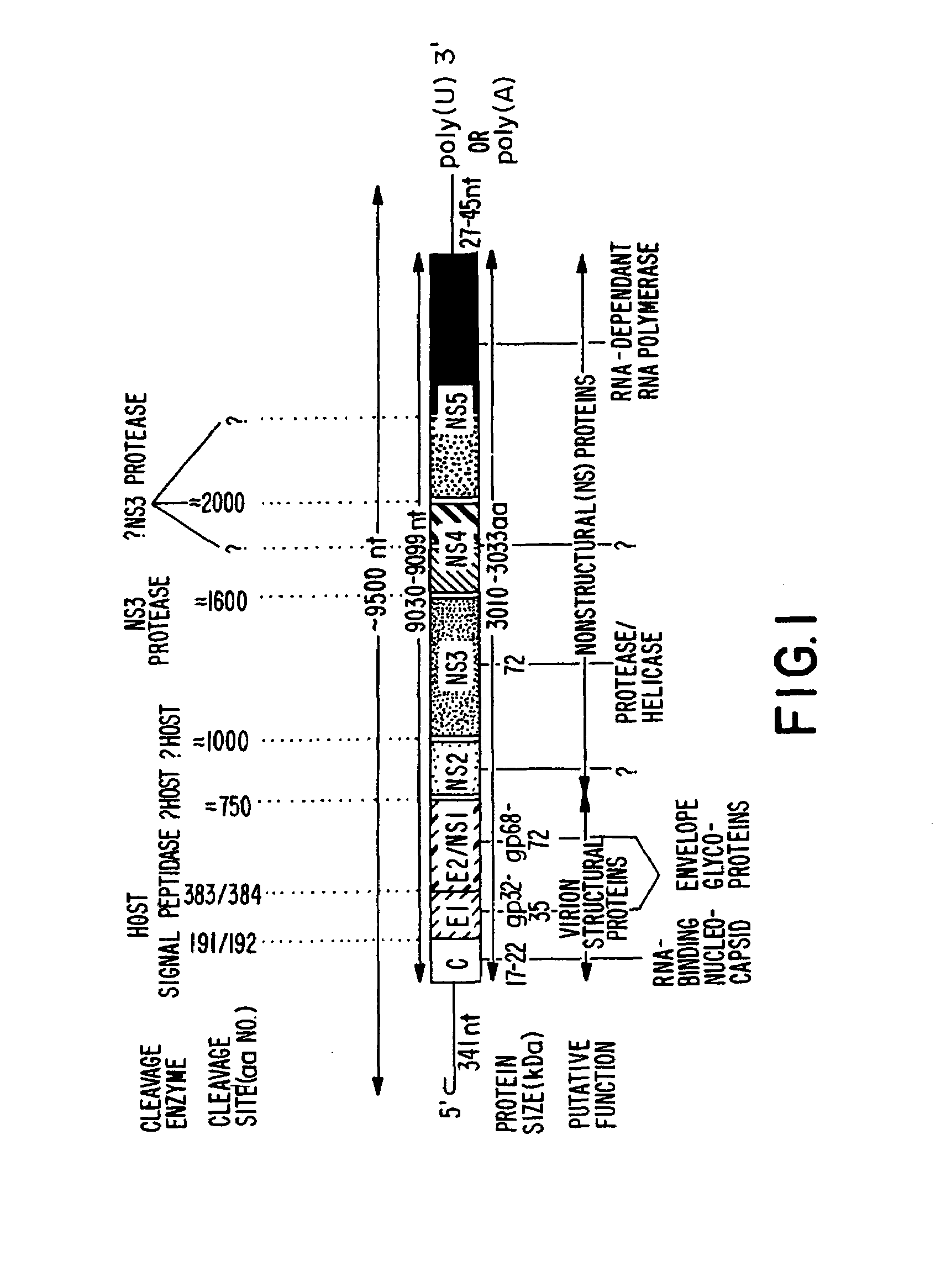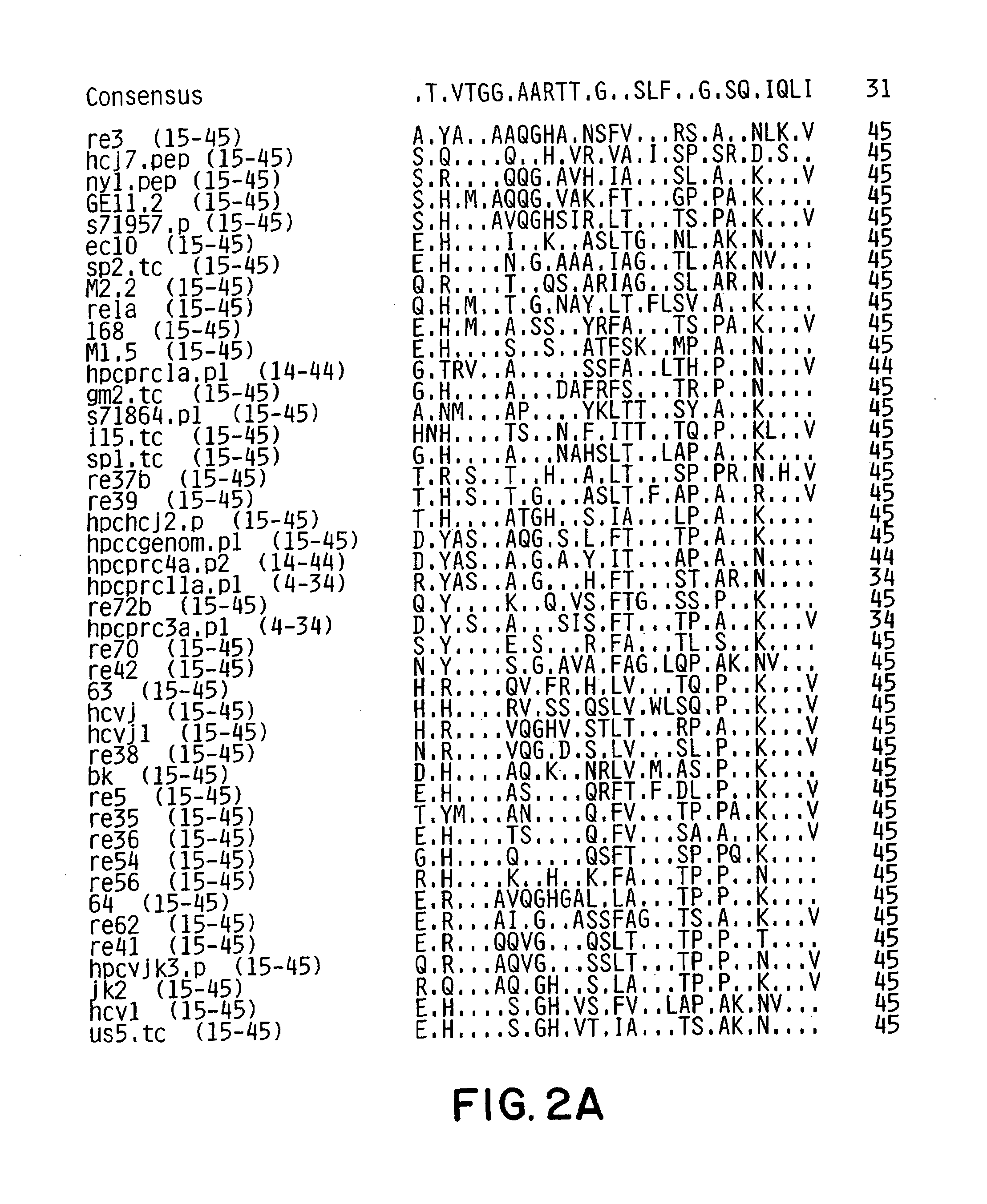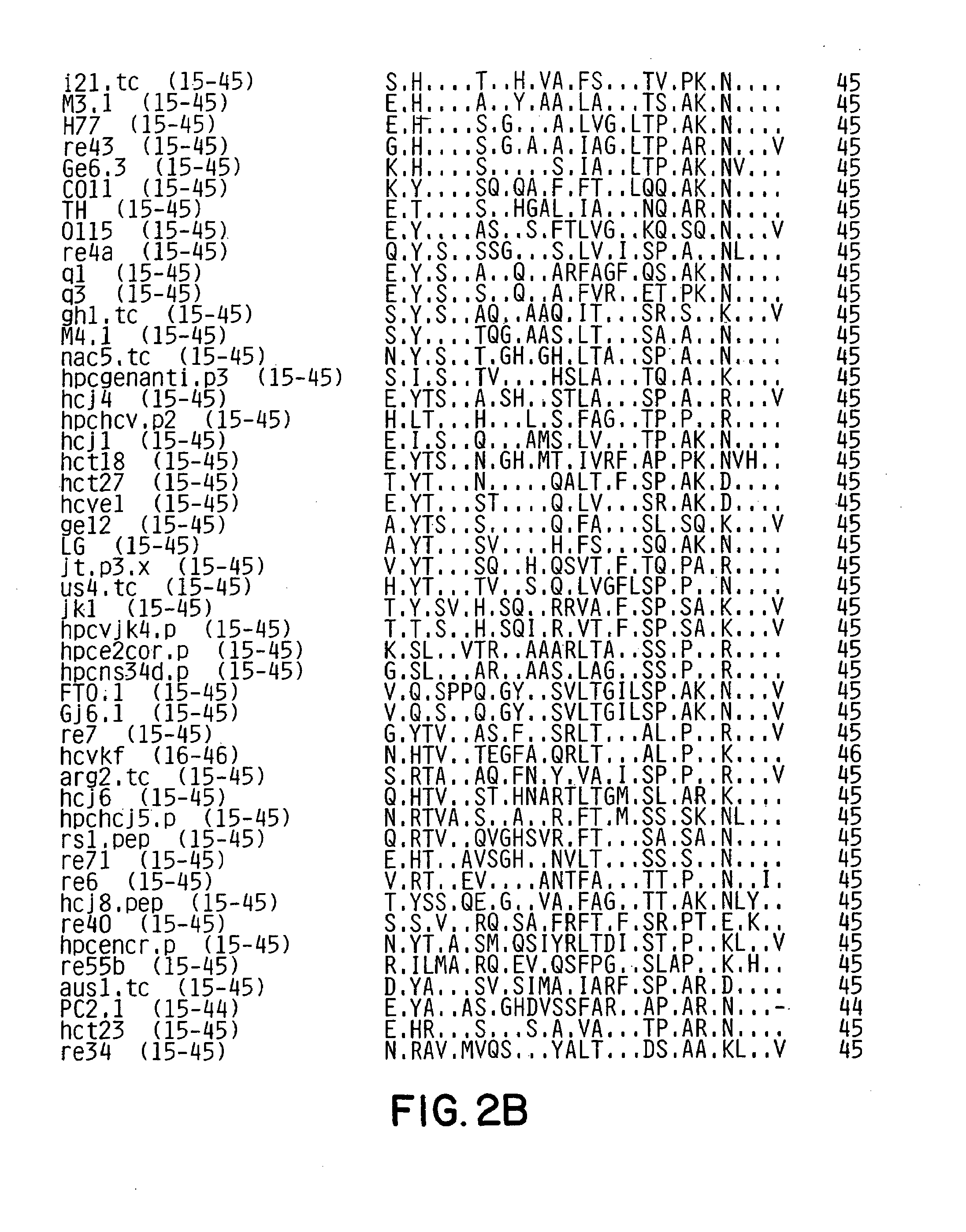Conserved motif of hepatitis C virus E2/NS1 region
a conserved motif and hepatitis c virus technology, applied in the field of conserved motif and immunologically important motif in the e2/ns1 region, can solve the problem of substantial fluidity of the hcv genom
- Summary
- Abstract
- Description
- Claims
- Application Information
AI Technical Summary
Benefits of technology
Problems solved by technology
Method used
Image
Examples
example 1
Identification of a Conserved Motif in E2HV
[0111]A conserved motif(s) within the E2HV domain was identified by examining 90 E2HV sequences from isolates from around the world for conserved features. The HCV sequences examined are shown in FIG. 2. The examination showed significant variability of the E2HV sequences.
[0112]E2HV sequence data from patients followed sequentially after HCV infection is indicative that mutations appear with greater frequency between amino acids 395 to 407 and with time appear throughout the remainder of the E2HV domain. See FIG. 3, which presents the sequence data for three patients: Hutchinson (H) (Ogata et al. (1991), Proc. Natl. Acad. Sci. USA 88:3392–3396); HC-J4 (Okamoto et al. (1992), Virology 188:331–341); and NY / RS (Kato et al. (1992), Biochem. Biophys. Res. Commun. 181:279–285).
[0113]It is also observed from FIG. 3 that Patient RS appears to have a different pattern of fewer, randomly distributed point mutations acumulating over time. The RS patte...
example 2
Mapping of HCV1 E2HV Epitopes
[0116]For epitope mapping of the E2HV region of E2 / NS1, see PCT Publ. No. WO93 / 00365, with the following modifications. Overlapping peptides from the sequence spanning amino acid positions 384 to 413 of HCV1 attached to pins were prepared. The peptides were reacted with an IgG preparation from sheep that had been immunized with a conjugated 30-mer peptide from the same region.
[0117]The sheep IgG preparations containing anti-HV E2 antibodies were prepared from sheep immunized with a peptide coupled to diphtheria toxoid. The peptide spanned the HCV1 E2HV region, and had the following sequence:[0118]acetyl-C-B-E-T-H-V-T-G-G-S-A-G-H-T-V-S-G-F-V-S-L-L-A-P-G-A-K-Q-N-V-Q-L-acid, (SEQ ID NO: 2) wherein B is butyl alanine.
[0119]The results of the screening using sheep serum IgG s1634-2 and s1635-2 from sheep immunized with the conjugated 30-mer are shown in FIG. 5. The results indicate that sheep 1634-2 IgG reacts with the minumum epitope 400VSLLA(SEQ ID NO: 3)40...
example 3
Passive Immunization with Anti-E2HV Antibodies
[0143]The IgG preparation from sheep immunized with a 30-mer peptide from E2HV of HCV1 was used for passive immunization to determine its protective effect against infection by HCV.
[0144]A chimpanzee was immunized with the anti-E2HV sheep IgG preparation that had been prepared from sheep immunized with a peptide encompassing HCV1 E2HV coupled to diphtheria toxoid. The preparation of the IgG preparation is described in Example 2. Twenty four hours later, the chimpanzee was challenged with 10 chimpanzee infectious doses (CID) / ml of HCV1 inocula. Prior to inoculation, the virus was thawed, immediately diluted to 10−5 in sheep serum, and incubated for 20 minutes at room temperature.
[0145]The chimpanzee was examined for signs of viremia at weekly intervals after the challenge, using as indicators physical symptomology associated with HCV infection and the presence of viral RNA in the serum as detected by PCR assay. Using the PCR assay method ...
PUM
| Property | Measurement | Unit |
|---|---|---|
| time | aaaaa | aaaaa |
| pH | aaaaa | aaaaa |
| concentration | aaaaa | aaaaa |
Abstract
Description
Claims
Application Information
 Login to View More
Login to View More - R&D
- Intellectual Property
- Life Sciences
- Materials
- Tech Scout
- Unparalleled Data Quality
- Higher Quality Content
- 60% Fewer Hallucinations
Browse by: Latest US Patents, China's latest patents, Technical Efficacy Thesaurus, Application Domain, Technology Topic, Popular Technical Reports.
© 2025 PatSnap. All rights reserved.Legal|Privacy policy|Modern Slavery Act Transparency Statement|Sitemap|About US| Contact US: help@patsnap.com



